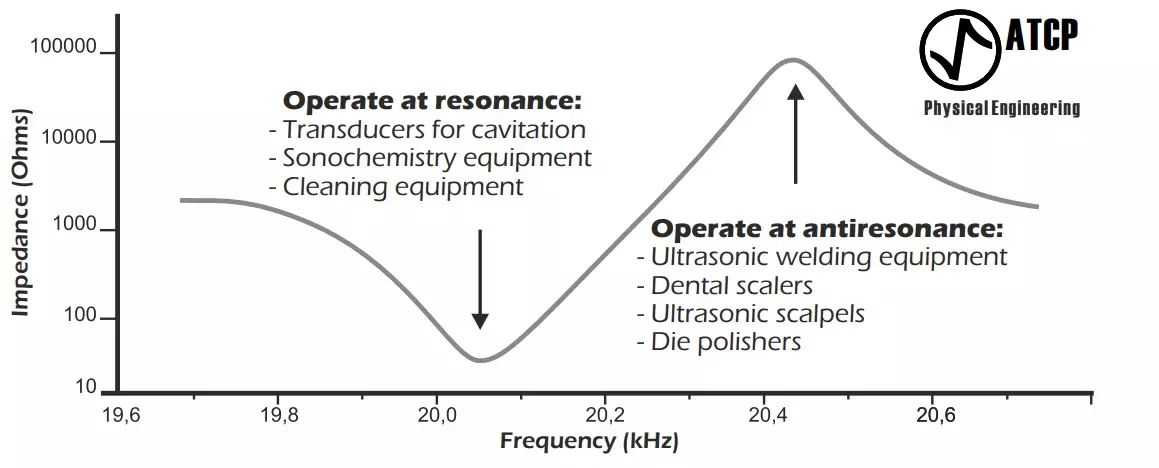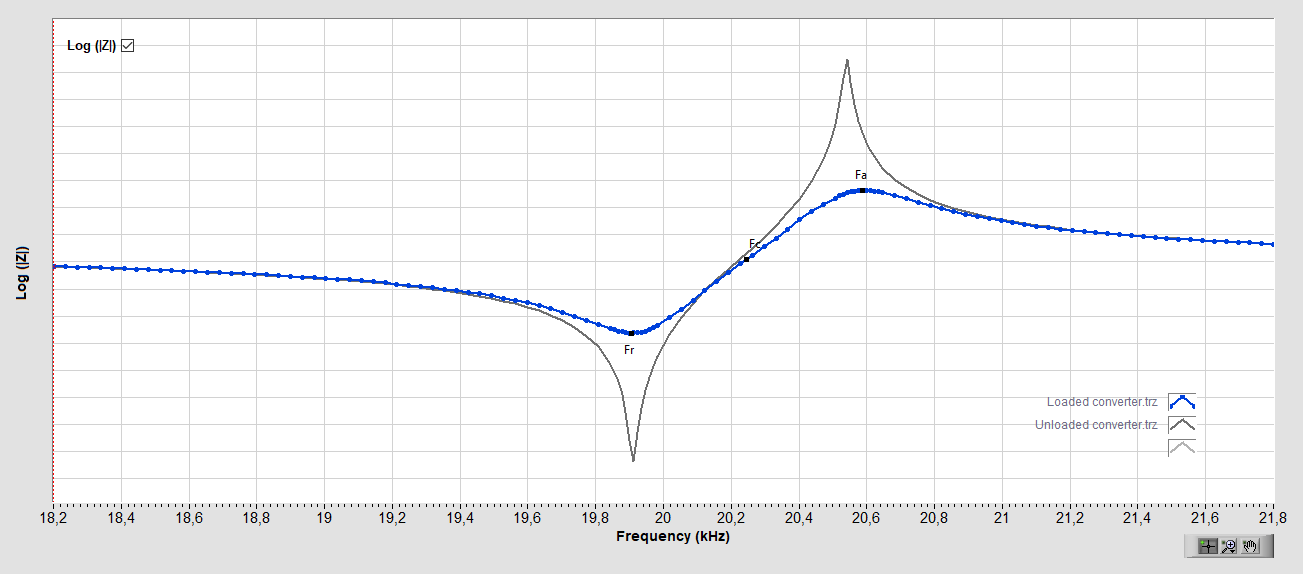FAQ: Why do some ultrasonic power equipment operate at resonance and others at antiresonance frequency?

Typical operating modes of ultrasonic transducers testable by the TRZ ®Analyzer.
Most power ultrasonic equipment subjected to great loads variation operates at anti-resonance frequency (parallel -frequency), as the ultrasonic welding machines do. In contrast, equipment subjected to constant load or to mild load variation usually operates at resonance (series -frequency), for instance, ultrasonic cleaners.
It is easier and cheaper to drive ultrasonic transducers at resonance frequency (Fr) with regards frequency tracking because there is a minimum point of impedance at Fr. Positive second derivative at impedance modulus curve eases Fr tracking: if the electronics is too slow, there may be performance loss, but hardly a damage to power generator. However, at Fr the impedance is much lower when unloaded, which may cause current overload if the load is removed (that is why you should not turn an empty ultrasonic cleaner on).
At the anti-resonance frequency (Fa), it is harder to driver the transducer or converter safely because there is maximum impedance at this frequency and any tracking failure leads to overload. The generator circuit must be fast and precise. On the other hand, the impedance at the antiresonance frequency increases when unloaded, which makes this option highly convenient for applications with great loads variation. Because of that, it is possible to drive an unloaded ultrasonic welder indefinitely since there would be no chance of damaging the power generator.
It worth to mention that an ultrasonic transducer is able to operate at any frequency between Fr and Fa and in the vicinity of these frequencies with proper tuning and tracking.
Frequencies and impedances as a function of the value of the load. When the load increases, the difference between Fr and Fa increases, Zr increases and Za decreases.
| Load | Fa-Fr | Zr | Za |
| ↑ | ↑ | ↑ | ↓ |

Impedance curves with and without load – behavior of frequencies and impedances as a function of load.
Fr, Zr, Fa and Za are dynamic parameters affected by changes in loading, as shown in the table above, that is the reason why power ultrasonic generators need frequency tracking.
Learn more about testing converters and acoustic stacks.
